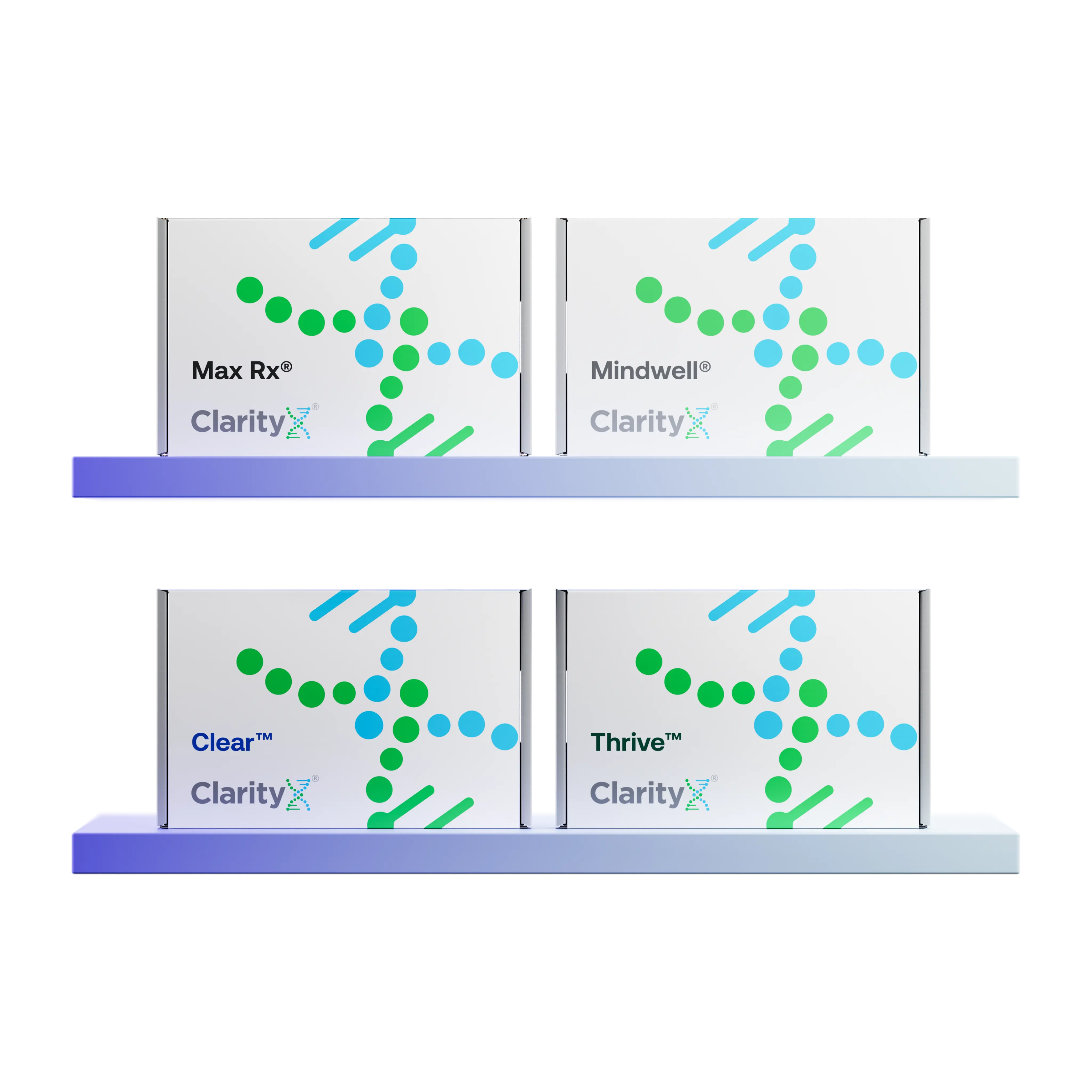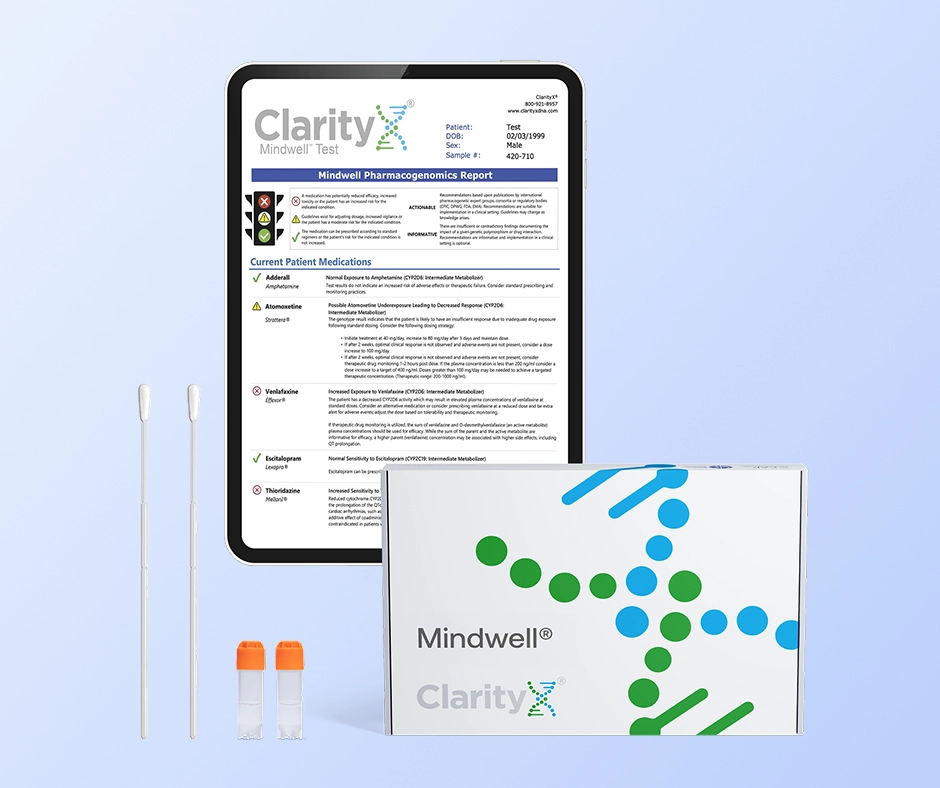It’s a question more clinicians are hearing in their practice:
“I think I have the MTHFR mutation. What does that mean for my health?”
Driven by direct-to-consumer genetic testing and online health forums, patients are increasingly aware of the MTHFR gene. While this awareness can lead to confusion, it also opens the door to a more nuanced conversation about personalized medicine.
As a clinician, understanding the real, evidence-based implications of MTHFR variants is crucial—not just for answering patient questions, but for optimizing treatment outcomes, especially in mental health.
MTHFR: A Quick Clinical Refresher
The methylenetetrahydrofolate reductase (MTHFR) gene provides instructions for making the MTHFR enzyme, a key player in one-carbon and folate metabolism.
Its main role is to convert 5,10-methylene-THF to 5-methyl-THF (L-methylfolate)—the active methyl donor used to remethylate homocysteine to methionine and support synthesis of S-adenosylmethionine (SAM), the body’s universal methyl donor.
Among common genetic variants, C677T and A1298C are the most studied. The C677T homozygous (TT) genotype can reduce enzyme activity by about 70%, while heterozygotes (CT) show about a 30–40% reduction.
The A1298C variant generally has milder effects and rarely elevates homocysteine on its own.
Clinical Impact 1: Folate, Homocysteine, and Neurotransmitters
A less efficient MTHFR enzyme can influence several biochemical pathways:
- Reduced Active Folate: Individuals with the C677T variant may have lower levels of 5-MTHF, especially with low dietary folate intake.
- Elevated Homocysteine: Impaired remethylation of homocysteine to methionine can lead to mild hyperhomocysteinemia, which is a biochemical marker of cardiovascular risk. However, clinical trials have not shown that lowering homocysteine reduces cardiovascular events.
- Neurotransmitter Support: Adequate folate status is necessary for methylation reactions that sustain tetrahydrobiopterin (BH4) and SAM—both required for synthesis of serotonin, dopamine, and norepinephrine.
In other words, low L-methylfolate availability can indirectly impair neurotransmitter synthesis, which may contribute to depressive symptoms or treatment resistance in some patients.
Clinical Impact 2: MTHFR and Antidepressant Response
The relationship between MTHFR, folate, and neurotransmitter metabolism also informs antidepressant pharmacodynamics.
The “Low-Folate” Hypothesis for Treatment Resistance
Most antidepressants, including SSRIs and SNRIs, enhance neurotransmitter availability at the synapse. However, if baseline synthesis of those neurotransmitters is limited by suboptimal methylation capacity or low CNS folate, antidepressant efficacy may be blunted.
A patient with a significant MTHFR variant—or low measured folate/B12—might therefore show a partial or non-response to standard therapy.
PGx-Informed Strategy: L-Methylfolate Augmentation
This is where the “MTHFR question” becomes clinically actionable.
For patients with depression who have an inadequate response to an SSRI or SNRI, adjunctive L-methylfolate (15 mg/day) has demonstrated benefit in randomized trials—regardless of genotype.
If a patient is known to carry an MTHFR variant, supplementation may be particularly rational, but it is not necessary to test before treatment.
Providing the brain with L-methylfolate helps ensure adequate substrate for methylation and monoamine synthesis, potentially improving antidepressant response.
The Bigger Picture: MTHFR is Only One Piece of the Puzzle
While a patient's MTHFR status provides a vital clue, it doesn't tell the whole story of their medication response. True precision prescribing requires a more comprehensive view.
Clinical Scenario: The MTHFR Patient Who is Also a Poor Metabolizer
MTHFR status provides a useful biochemical clue—but it’s only part of a patient’s pharmacogenetic profile.
True precision prescribing integrates MTHFR with broader pharmacokinetic data, especially the CYP450 enzyme system.
Clinical Scenario: The MTHFR Patient Who Is Also a Poor Metabolizer
Consider a patient with an MTHFR variant and treatment-resistant depression.
You add L-methylfolate, but pharmacogenetic testing also reveals they are a CYP2D6 Poor Metabolizer.
This means they clear many SSRIs (e.g., paroxetine, fluoxetine) slowly, increasing the risk of side effects or toxicity.
Without integrating both data points, the clinician might correctly address methylation support but still face therapeutic failure due to altered drug metabolism.
The ClarityX Advantage: Our reports don't just look at MTHFR in isolation. We analyze it alongside the critical CYP450 metabolic pathways. This integrated approach allows you to:
- Address Foundational Issues: Identify if L-methylfolate support is needed.
- Select the Right Drug: Choose a medication that is compatible with the patient's metabolic pathways.
- Optimize the Dose: Start with a genetically-informed dose to minimize side effects and maximize efficacy.
By integrating these data points, you can answer the "MTHFR question" with confidence and provide a truly personalized treatment strategy that accounts for the full spectrum of a patient's genetic profile.






